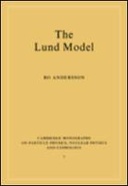Explore

The Lund model, inspired by quantum chromodynamics, has provided a promising approach to the dynamics of quark and gluon interactions. Starting with a brief reprise of basic concepts in relativity, quantum mechanics of fields and particle physics, this book discusses: the dynamics of the massless relativistic string; confinement; causality and relativistic covariance; Lund fragmentation processes; QED and QCD Bremsstrahlung; multiplicities and particle-parton distributions. Throughout the book, theory is confronted with current experimental data, and implications for future experiments are also considered. The book also explores the relationships between the Lund model and other models based on field theory (the Schwinger model, S-matrix models, light-cone algebra physics and variations of the parton model), and models based on statistical mechanics (the Feynman-Wilson gas, scaling, iterative cascade models).
This book is included in DOAB.
Why read this book? Have your say.
You must be logged in to comment.
Rights Information
Are you the author or publisher of this work? If so, you can claim it as yours by registering as an Unglue.it rights holder.Downloads
This work has been downloaded 37 times via unglue.it ebook links.
- 37 - pdf (CC BY-NC-ND) at Unglue.it.
Keywords
- baryon production
- deep inelastic scattering
- Electromagnetic fields
- flavour
- fragmentation formulae
- gluon emission
- hadronic interaction models
- Hanbury–Brown–Twiss-effect
- heavy quark fragmentation
- heretical structure functions
- inelastic lepto-production
- lambda measure
- Lund gluon model
- Lund model
- massless relativistic string
- meson ratio
- multigluon emission
- parton model
- perturbative QCD
- Regge theory
- Relativistic kinematics
- renormalisation
- string decay
- thema EDItEUR::P Mathematics and Science::PH Physics::PHN Nuclear physics
- transverse momentum generation
- virtual quanta
Links
DOI: 10.1017/9781009401296Editions

